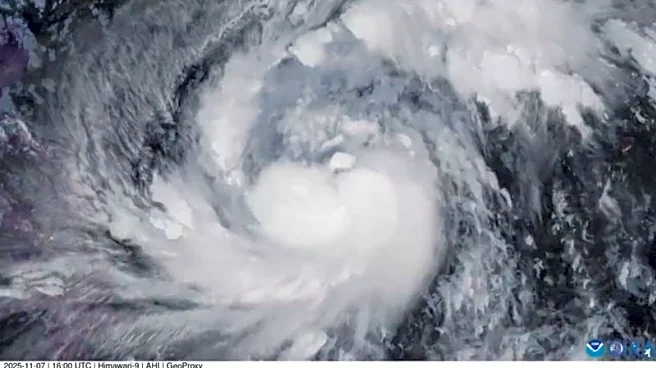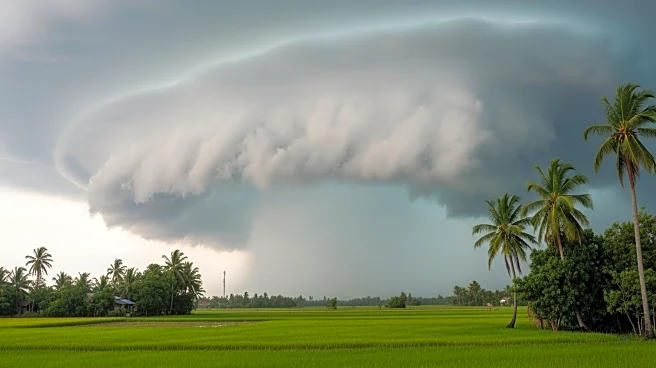What's Happening?
Typhoon Fung-wong, locally known as Uwan, is approaching the Philippines with the potential to become a super typhoon. The storm follows closely after Typhoon Kalmaegi, which caused significant destruction
and loss of life in the region. Fung-wong is expected to make landfall on Sunday evening, prompting the evacuation of over 100,000 residents from eastern and northern areas. The Philippine Atmospheric, Geophysical and Astronomical Services Administration (PAGASA) has upgraded the storm's intensity, recording maximum wind speeds of 185 kph (115 mph) and gusts of 230 kph (143 mph). The storm's massive circulation is already affecting parts of the country with heavy rain and winds. Authorities have warned residents in low-lying and coastal areas to evacuate and suspend marine activities due to the threat of violent winds and destructive storm surges.
Why It's Important?
The Philippines is highly vulnerable to typhoons due to its geographical location along the Pacific typhoon belt. The impact of Typhoon Fung-wong is significant as it threatens to exacerbate the damage caused by Typhoon Kalmaegi, which resulted in nearly 200 deaths and widespread destruction. The country's infrastructure and communities are at risk, with potential disruptions to transportation and daily life. The storm highlights the ongoing challenges faced by the Philippines in managing natural disasters, compounded by issues such as corruption in flood control projects. The intensification of typhoons in the region is linked to climate change, which is increasing the frequency and severity of such events, posing long-term risks to vulnerable populations.
What's Next?
As Typhoon Fung-wong approaches, the Philippines is bracing for further impacts, with more evacuations likely as the storm progresses. The government and disaster response agencies are expected to continue monitoring the situation closely, providing updates and assistance to affected areas. The aftermath of the storm may lead to increased scrutiny of flood control measures and the effectiveness of disaster preparedness strategies. International aid and support may be sought to assist in recovery efforts, particularly in areas severely affected by consecutive storms. The ongoing climate crisis may prompt further discussions on sustainable development and resilience building in the region.
Beyond the Headlines
The situation in the Philippines underscores the ethical and environmental dimensions of climate change, as industrialized nations bear historical responsibility for global warming that intensifies regional storms. The disproportionate impact on populations in the Global South raises questions about equity and justice in climate policy. The corruption scandal involving flood control projects highlights governance challenges that can hinder effective disaster management. Long-term shifts in weather patterns may necessitate changes in urban planning and infrastructure development to mitigate future risks.













